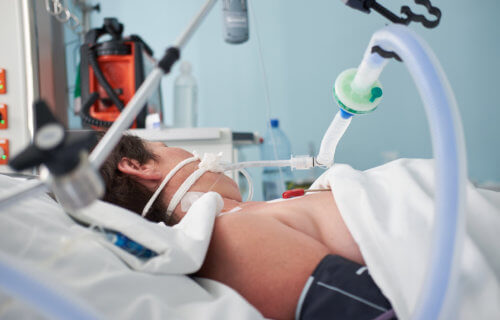CHICAGO — The main symptoms of coronavirus are well known at this point, but the long list of associated side effects and complications seems to keep growing. Now, a new study from Northwestern University reveals yet another concern for patients dealing with a severe case of COVID. Researchers say that coronavirus patients placed on ventilators are at an increased risk of permanent nerve damage.
Patients, regardless of COVID or not, in need of ventilator support are situated in a face down position that supports air flow and lowers mortality risk. For coronavirus patients, however, this position is resulting in nerve damage in many instances. What makes all of this so strange is the fact that other, non-coronavirus related ventilator patients very rarely ever incur nerve damage.
What’s going on here? The study’s authors theorize that all the extra inflammation and reduced blood flow in the body caused by COVID-19 is causing these nerve complications.
“It’s shocking how big a problem it is,” lead investigator Dr. Colin Franz, a physician-scientist at Shirley Ryan AbilityLab and an assistant professor of physical medicine and rehabilitation and neurology at Northwestern’s Feinberg School of Medicine, says in a release. “This is a much higher percentage of patients with nerve damage than we’ve ever seen in any other critically ill population. Ordinarily, very sick people can tolerate the position that helps their breathing. But COVID patients’ nerves can’t tolerate the forces other people can generally bear.”
An ‘underappreciated’ issue among COVID ventilator patients
It’s estimated that 12-15% of the most severe COVID-19 patients included in this and one other study have suffered nerve damage due to ventilator use in this position. On a global scale, researchers believe thousands have developed nerve damage.
“It’s underappreciated, if you take our numbers and extrapolate them,” Franz adds.
Personally, Franz says he has seen 20 patients with nerve damage from seven different hospitals.
Generally speaking, whenever anyone is bedridden for a long period of time, there’s going to be an adjustment period in which their body is much weaker than usual. Due to this, it’s likely that many nerve damage cases among COVID-19 patients go unreported. Researchers first suspected something more was happening when multiple recovering patients showed signs of full paralysis in an important joint (wrist, ankle, shoulder) on one side of their bodies.
Changing the positions of patients
In light of these revelations, doctors and staff at Northwestern Memorial Hospital are in the process of adjusting their prone position protocol for COVID-19 patients.
“We noticed patients are getting a lot of pressure at the elbow or at the neck, so we’ve made some adjustments to the way we position the joints as well as putting extra padding under the elbow and the knee where there is the most pressure,” Franz notes.
As far as specific injuries, loss of hand function, frozen shoulder, foot drops, and hand drops are the most frequent nerve issues among recovering patients. Some patients now require a wheelchair, brace, or cane.
Franz and his team are doing their best to try to help patients undo some of this damage via therapeutic nerve stimulation. Still, many are unlikely to ever make a full recovery due to pre-existing conditions such as diabetes mellitus.
“This could mean permanent difficulties with walking or critical hand functions like writing or operating a computer or cell phone,” he concludes.
The full study has been accepted for publication by the British Journal of Anaesthesia. It is currently available for viewing as a preprint.
Like studies? Follow us on Facebook!
